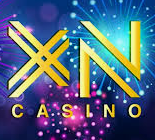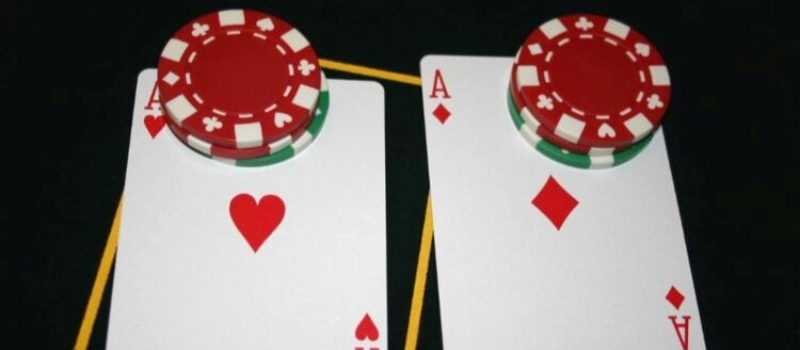Table of Contents:
Getting familiar with blackjack terminology is the first step toward mastering the game. If you’re new to blackjack, understanding these terms will help you follow the game smoothly. You’ll also be able to make smarter decisions and enjoy playing without feeling lost. This guide simplifies things by breaking down both basic and advanced blackjack terms. By the time you finish, you’ll be confident and ready to elevate your blackjack skills!
Blackjack Terms for Beginners
In this section, I categorize blackjack terms and explain them from the ground up. This method ensures you grasp the essentials before you start playing.
Basic Blackjack Vocabulary
Let’s begin with the fundamentals! Here are the core terms covering players, dealers, and how cards function.
-
Blackjack: The strongest hand possible — when your first two cards total 21, typically an Ace (valued at 11) paired with a 10-point card (10, Jack, Queen, or King).
-
Hand: The cards you hold in a round, e.g., an 8 and a 6 make a hand totaling 14.
-
Action: The player’s turn to decide their next move (hit, stand, double down, or split).
-
Dealer: The casino’s representative who deals the cards and plays according to house rules.
-
Player: Anyone playing against the dealer.
-
Deck: The collection
-
House:The casi
-
House edge: The casino’s built-in advantage, usually around 0.5% with optimal play, meaning the casino expects to win roughly 50 cents per $100 wagered.
-
Payout: The reward you get if your hand beats the dealer’s. A standard blackjack payout is 3:2 (win $3 for every $2 bet if you hit blackjack).
-
Odds: The likelihood of certain outcomes, such as drawing a blackjack or the dealer busting. Skilled players use odds to guide their decisions.
Once you’re comfortable with these, move on to more advanced terminology!
Card Values & Types
Blackjack revolves around cards, so understanding card values and types is key.
-
Ace: Can count as either 1 or 11 points, whichever benefits your hand most. For example, Ace + 7 = 18; if you then draw a 10, the Ace shifts to 1 to avoid busting.
-
Paint: The face cards — Kings, Queens, and Jacks — called “paint” because of their detailed artwork, each worth 10 points.
-
Ten-value card: Any card valued at 10 points, including 10, Jack, Queen, and King.
-
This A card that causes your hand to exceed 21, resulting in an immediate loss.
-
Burn card: The card removed from the deck before dealing to prevent players from gaining an edge by seeing it.
-
Upcard: The dealer’s visible card that all players can see.
-
ToThe dealer’
-
Cut card: A colored plastic card used to mark where the deck will be cut or reshuffled.
Hand
Your hand determines your strategy. Here are terms to describe different hand types:
-
Soft hand: A hand with an Ace counted as 11 points (e.g., Ace + 7 = Soft 18).
-
Soft total:The total then
-
Hard hand: A hand with no Ace or an Ace counted as 1 point to prevent busting (e.g., 10 + 6 = Hard 16).
-
Hard total:Th
-
Well A hand totaling between 17 and 21 that typically doesn’t require hitting (e.g., 10 + 7 = Pat 17).
Dealer & Deck-Related Terms
Knowing how the dealer and deck work gives insight into each round:
-
Deck: A standard 52-card set used in blackjack, sometimes single or multiple decks.
-
That A game played with one deck.
-
Multiple-deck: Games using two or more decks (usually 4, 6, or 8) shuffled together, making card counting more difficult.
-
Round:THE
-
Shuffle: Randomizing the order of cards before dealing.
-
Preference When the dealer reshuffles early to prevent players from gaining an advantage (e.g., via card counting).
-
Favorable A deck rich in high-value cards, advantageous to the player.
-
Unfavorable deck: A deck with more low-value cards, favoring the dealer.
-
Ten-poor deck: Fewer 10-value cards than usual — bad for players.
-
Ten-rich deck: More 10-value cards than usual — good for players and card counters.
-
Heads up: A blackjack game with one player versus the dealer.
-
Shoe: A device that holds multiple decks to speed up dealing and prevent cheating.
Player Actions
IN
-
Dealt: Receiving cards at the start of a round.
-
Hit: Request another card to improve your total without busting.
-
Draw a card: Another way to say “hit.”
-
Hit 17 (H17): Rule where dealer must hit a soft 17, slightly increasing house edge.
-
Stand 17 (S17): Dealer must stand on soft 17, better for players.
-
S Choose not to take any more cards.
-
Split: Separate a pair into two hands, doubling your bet.
-
Double down: Double your original bet and take only one more card.
-
Surrender: Give up half your bet if you think your chances are low.
-
Early surrender: Surrender before dealer checks for blackjack (rarely offered).
-
Late surrender (LS): Surrender after dealer checks for blackjack.
Participant Roles
The people around the table:
-
First baseman: Player to the dealer’s immediate left who acts first.
-
Ploppy: Casual or inexperienced player.
-
Floorman: Casino employee overseeing the tables and enforcing rules.
-
Anchorman: Player to dealer’s right who acts last.
-
High roller: Player who bets large amounts regularly, often receiving perks.
Common Game Situations
Important to me
-
B When your hand exceeds 21, causing an instant loss.
-
putAnd those
Money & Betting Terms
Understanding money matters:
-
Bankroll: The money set aside specifically for blackjack.
-
Table limit: Minimum and maximum bets allowed at the table.
-
Unit: Your standard bet size.
-
Bet spread: Range between your smallest and largest bets.
-
Side bet: Optional additional bets with separate payouts (e.g., Insurance).
-
Insurance: Side bet offered when dealer shows an Ace, paying 2:1 if dealer has blackjack.
-
Even money: A 1:1 payout offered when you have blackjack and dealer shows an Ace.
-
Flat bet: Betting the same amount every hand.
-
Spend Different values like red ($5), green ($25), black ($100), purple ($500, aka Barney), orange ($1,000, aka Pumpkin), and brown ($5,000).
Card Counting & Strategy Terms
For players looking to step up their game:
-
Balanced count: A counting method where the count returns to zero after a full deck is counted.
-
Running count: The ongoing tally of cards as they’re dealt.
-
True count: Running count adjusted for the number of decks left.
-
In A true count value that signals when to change your strategy.
-
Deck penetration: How much of the shoe has been dealt before reshuffling.
-
Hole-carding: Attempting to see the dealer’s hidden card for advantage (not illegal but frowned upon).
-
Spooky:Illegal yes
Casino Rules & Security
How casinos protect their games and respond to players:
-
86’d:becoming a being
-
Back off: A warning to lower bets or stop playing a certain game without leaving the casino.
-
Barred:Offices
-
Black book: Official list banning players from Nevada casinos.
-
GriffiA
-
Surveillance Information Network (SIN):Yes
Tips for Learning Terms
Memorizing blackjack terms can be simple and fun:
-
Use flashcards with terms on one side and definitions on the other.
-
Group terms into categories to create mental links.
-
Associate
-
Practice while playing free online blackjack or live games.
-
Teach someone else to reinforce your knowledge.
-
Review frequently but in short, manageable sessions.
Final Thoughts
With these terms under your belt, you’ll approach blackjack tables with confidence. You’ll understand the lingo, keep pace with dealers and players, and make smarter decisions. Whether playing casually or seriously, knowing the vocabulary will help you enjoy the game and last longer at the table. So dive in, use these terms, and may the cards be in your favor!

